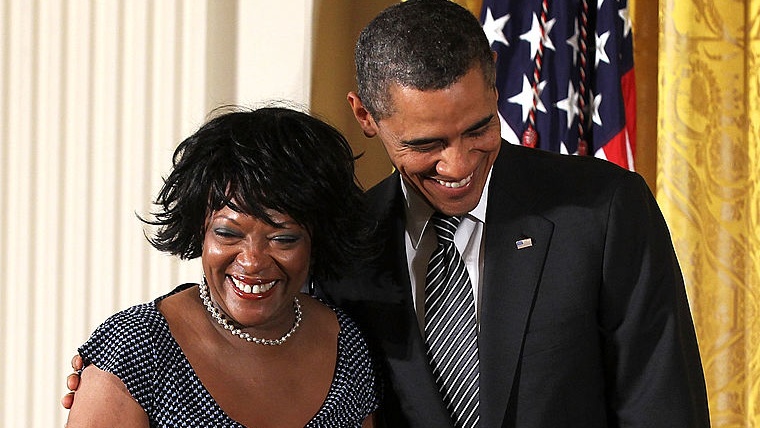If Maya Angelou is revered for having a significant impact on 20th century poetry, then the same could be said about Rita Dove. Born in 1952, the Ohio native was destined for literary success when she was selected as a Presidential Scholar in 1970, becoming one of the top 100 American high school graduates that year. After earning bachelor's and master's degrees, she began her career in academia, teaching creative writing at Arizona State University.
She would go on to earn national distinction in 1987, receiving the Pulitzer Prize in Poetry for her 1986 semi-autobiographical work Thomas and Beulah. In May 1993, Dove was named Poet Laureate of the United States, a role she held for two years. Not only was she the youngest to ever be selected, at age 41, but she was also the first woman and first Black person to receive the high honor.
Since 1989, Dove has retreated to a life in southern Virginia, teaching English at the University of Virginia in Charlottesville. Whether or not she intends to publish more original work in her storied career, these five works solidify her as one of the most eminent wordsmiths in the industry.
1. Trayvon, Redux
Like many poets of her genre, Dove uses real-life events as inspiration for her work. The 2012 murder of 17-year-old Trayvon Martin and 2013 acquittal of his killer, George Zimmerman, is the subject of this 2013 poem. In the composition, Dove highlights how Martin’s death ignited a movement for racial inequality and police brutality. Written from the point of view of the tyrant, she draws the conclusion that both freedom and brutality cannot coexist in the same space.
2. Heart to Heart
Society accepts the heart as the traditional red or pink hue with curves at the top and a point at the bottom. On the contrary, the heart is designed much more complex than that, and Dove makes that aware in the opening stanza of “Heart to Heart.” While it’s accepted to connect this organ to our mental state, Dove rejects this ideology and instead, functions to help individuals survive. By giving the heart more realistic features (“just a thick clutch of muscle / lopsided / mute”), she distances the sentiment that a heart’s job is supposed to help the reader feel and understand what it means to be in love.
3. Exit
The words in “Exit” appear melancholy, but also hopeful. Leaving the environment you grew up in to search for a more fulfilling life can be difficult, but Dove connects imageries of a window, street or suitcase to the prospect of new beginnings to emphasize a direction of growth and maturity. As the poem continues, the subject begins to accept that exciting and favorable circumstances await them.
4. Dawn Revisited
In “Dawn Revisited,” Dove equates the start of a new life to the beginning of each day, using one of the most obvious indications of dawn as imagery: breakfast. By identifying “the prodigal smell of biscuits / eggs and sausage on the grill,” as the subject sits down to eat, they’re left to ponder all the new opportunities to anticipate for the day. The vivid allusions to light are a subtle reminder there is something promising ahead. As the idiom goes: “Look on the bright side.”
5. Vacation
In this piece, Dove connects waiting to a state of calmness. She sets the scene of an airport, identifying various individuals who have assembled together to board a flight. An athlete, exhausted mom and the business executive may come from different walks, but she brilliantly links everyone together at the end. For this short moment, this is a unified community a part of Flight 828 boarding at Gate 17.
The airport is a perfect metaphor for emphasizing the benefits of patience. While there, the only objective is to board the flight. Following check-in, security, etc., there’s not much else to do but wait. In that moment, it’s the perfect exercise to release past anxieties one had about traveling and focus on serenity without interruption.
If there’s anything these aforementioned poems reveal, it's that Rita Dove’s diverse voice shines through her work. The 68-year-old’s ability to use professional and personal incidents to draw attention to the Black experience in America is just one of several reasons why her name is attached to some of the highest literary accolades in the nation. Her capability to use other disciplines in her work – art, music, dance, etc. – only reiterates that when serious inspiration is there, the end result is timeless.
